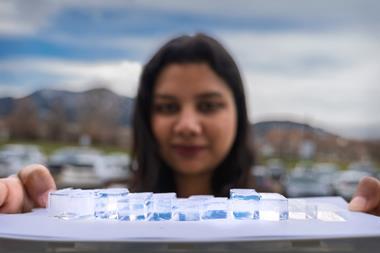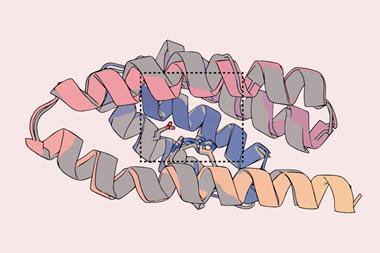Artificial muscles and electronic skins for space bubbles will be easier to make now that materials scientists in the US have made stretchable and bendable electronic devices.
Artificial muscles and electronic skins for space bubbles will be easier to make now that materials scientists in the US have made stretchable and bendable silicon electronic devices.
John Rogers and colleagues at the University of Illinois made single-crystal silicon into wavy ribbons. The wavy geometry meant that when the silicon was supported on a rubber substrate, it could be stretched by altering the wave amplitude, rather than changing the silicon interatomic spacings.
Rogers’ team made diodes and transistors with their wavy, stretchy silicon and found that the electrical properties stayed constant as the devices were stretched or compressed. ’Stretchability is a much more difficult, but much more desirable, mechanical characteristic to achieve, compared to simple bendability,’ Rogers told Chemistry World.
Stretchy devices will make monitoring the structural health of curved surfaces, like aeroplane wings, easier, said Rogers. Equally, they could be used as sensor skins for use in biological systems like artificial muscles, or even as inflatable habitats for manned space exploration, he said.
The group will now try to make other stretchy electronic materials, such as gallium arsenide, indium phosphide and gallium nitride. ’We are also developing methods to make full scale integrated circuits into stretchable, wavy geometries,’ said Rogers. Katharine Sanderson
References
D-Y Khang et alSciencexpress, 2005, (DOI: 10.1126/science.1121401)






No comments yet